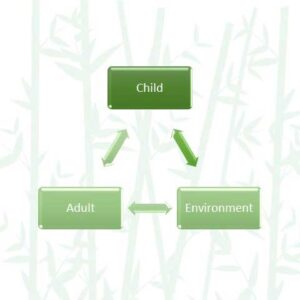Student-Engagement: It’s one of the most common issues, worries, or frustrations (You can fill in the blank with whatever emotion fits for you!) posed by Montessori teachers, and which I have experienced myself, is lack of engagement.
You know the ones I mean:
- the social butterflies who seem to flit from table to table getting into conversation and after conversation and seeming not to accomplish anything on their To Do list (ie. work plan)
- the self-distractors who sit alone and bother no one, but who also put projects away before finishing, to put it off for later which never seems to come
- the slam-bam-thank-you-ma’m student who breezes through part of an assignment (like one or two of ten math problems for the day or one sentence strip of five for the week or a set of matching cards without really reading, then checking the assignment off as DONE!
There are probably other “types” I could come up with, but you get the picture.
Where do you go to find help defining the student-engagement problem? To address the “problem”? To fix it?
Student-Engagement Montessori-Style
For us Montessorians, we’ve been taught to observe the student; to look deeply into what may be the child’s underlying motivation (or missing motivation) so we can help ease that challenge.

Or we might look at the environment that we have carefully prepared, but which may not be calling to the child and sparking their interest.
But how often do you look at yourself? What unspoken message might you be giving regarding the subject, the learning opportunity, the follow-up? The unspoken message that says, “Meh!”
Here’s the opportunity: to look deeply into yourself to discover that which you are passionate to share with children. The subject that lights you up. The activity that causes you to pursue ever more knowledge.
What sparks you? What would you do for 24 hours a day if you only could?
Then, how can you use your spark to ignite not only your best example of a learner, but also to spark those children in front of you?
Of course, all of these responses work together to form a whole student-engagement opportunity: the child, the environment, and the guide. (I’m SURE you’ve seen that triangle relationship before!) But how do you look at yourself as part of that diagram?
For me, the adult’s enthusiasm (your level of engagement) is the most important key to student-engagement and to the delivery of Cosmic Education! That the teacher, on fire with her own joy of learning, finds a way to share that with her students, inspiring them to find their own spark of connection to all the possible learnings that lay before them!
Want some help to discover your passions? Take this quick survey to find a place to begin your journey of engaged teaching.
